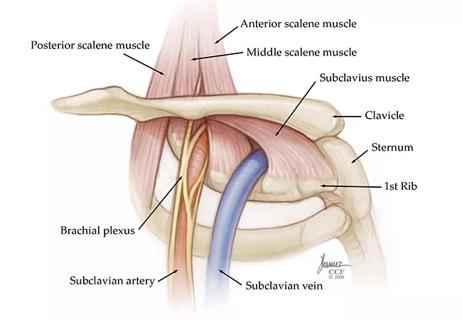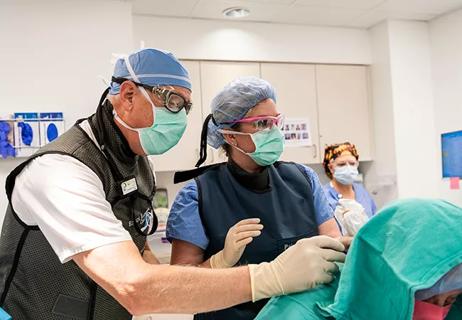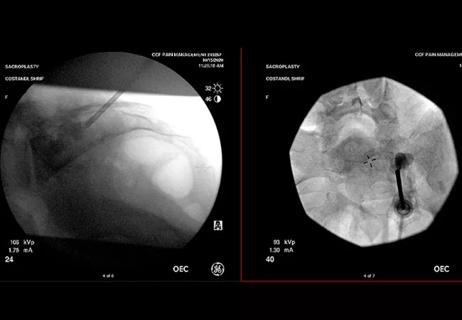When second-best can save lives, embrace it

By Daniel Sessler, MD
Advertisement
Cleveland Clinic is a non-profit academic medical center. Advertising on our site helps support our mission. We do not endorse non-Cleveland Clinic products or services. Policy
As an anesthesia investigator, I work to develop and teach perioperative interventions that improve surgical outcomes. During medical school and afterward, I spent three months in Liberia and have since maintained an interest in global health. It has been encouraging to see improvements in equipment, training and drugs lead to improved perioperative outcomes in many developing countries.
Unsurprisingly, surgical outcomes are worse in low-resource environments. But it turns out that poor surgical outcome is not the biggest problem. A more serious issue is that many patients who need surgery never get it at all.
I’m not referring to elective surgery. Many of the patients who don’t get surgery have otherwise treatable conditions, such as obstructed labor, open fractures that become infected and peritonitis that leads to sepsis. Without straightforward surgery, they suffer painful and protracted deaths.
When we just consider surgical outcomes, we miss the horrible prognoses for patients who never get to surgery. To put the problem into perspective, there are entire countries in Africa that do fewer operations in a month than Cleveland Clinic main campus does in a day.
Lack of surgery is not usually for want of operating rooms, nor is it from a shortage of surgeons, because one can usually be found. The major issue turns out to be a lack of anesthesiologists. Transporting patients to major centers does not help because there are few anesthesiologists anywhere. The typical African country has about a tenth of the anesthesiologists necessary, and many have even fewer.
Advertisement
Everyone agrees that more anesthesiologists are necessary and regional societies, supported by the American Society of Anesthesiologists and the World Federation of Societies of Anaesthesiologists, are working to train more. But it is also obvious that this will be a decades-long process.
The question is what to do in the meantime. Continuing to let patients die for lack of surgery is not an ethical option.
Ketamine is a well-known, inexpensive anesthetic that has been used for more than half a century. The drug is remarkably safe and easy to use, but rarely causes dysphoria and hallucinations. Consequently, in developed countries, it has been supplanted by other drugs that don’t cause delirium, although the alternatives require skilled titration and are thus more difficult to use.
In contrast, ketamine is easy to administer, and patients anesthetized with ketamine keep breathing normally and maintain adequate blood pressure and heart rate. Furthermore, even substantial overdoses are usually well-tolerated.
Of course ketamine isn’t risk-free, but the risks of ketamine are trivial compared to the risks of foregoing necessary surgery. Most importantly, the drug is safe enough to be used after limited training that is practical in developing countries.
I became involved in the mission to bring ketamine use to resource-limited countries after meeting Thomas Burke, MD, who directs the Global Health and Human Rights Division at Harvard Medical School. Dr. Burke spearheaded a project to train physicians and clinical assistants to properly use ketamine in surgery. The team developed the “Every Second Matters for Emergency and Essential Surgery – Ketamine” (ESM-Ketamine) package. ESM-Ketamine consists of a hands-on, five-day training program and a kit that includes ketamine, a guide for selecting patients and checklists that allow non-anesthetist clinicians to provide emergency general anesthesia.
Advertisement
ESM-Ketamine was tested in 15 Kenyan facilities where anesthesiologists were not available. More than 1,200 surgeries were then performed by clinicians who had ESM-Ketamine training. Not one of the patients died from ketamine, and all recovered from surgery. Hallucinations and agitation were reported in 13 percent of the patients, but these and other, more minor, side effects were successfully treated with a mild sedative.
The resulting report was published in the World Journal of Surgery in 2017. This article describes the study and includes feedback from 27 anonymized key-informant interviews strongly supporting ketamine as financially viable, easy to administer, highly scalable and having a positive impact on staff.
Training enough qualified anesthesiologists to meet current needs — much less keep up with population growth — is a daunting challenge. At best, it will take decades, but probably much longer.
Until then, our global, national and local anesthesia societies should embrace and support the appropriate use of ketamine as a safe and feasible alternative to no surgery and almost certain death. After all, anesthesiologists are best qualified to refine the program, set standards and perhaps even certify graduates.
Letting people die in the meantime for lack of perfect anesthesia would be unconscionable.
Dr. Sessler is the Michael Cudahy Professor and Chair of the Department of Outcomes Research at Cleveland Clinic.
Advertisement
Advertisement

Program enhances cooperation between traditional and non-pharmacologic care

Pain specialists can play a role in identifying surgical candidates

Clinical judgment is foundational to appropriately prescribing

The device is a less invasive alternative for patients who are struggle with chronic pain

The Four Pillar Project provides physicians with evidence-based talking points to quickly identify problem areas and educate patients to optimize important aspects of their health.

When conservative approaches don’t work, it may be time to turn to sacroplasty

Fourth iteration of the guidelines focuses on high-risk patient identification and evidence on newer drugs

It is a lifestyle commitment that can minimize pain and improve lives